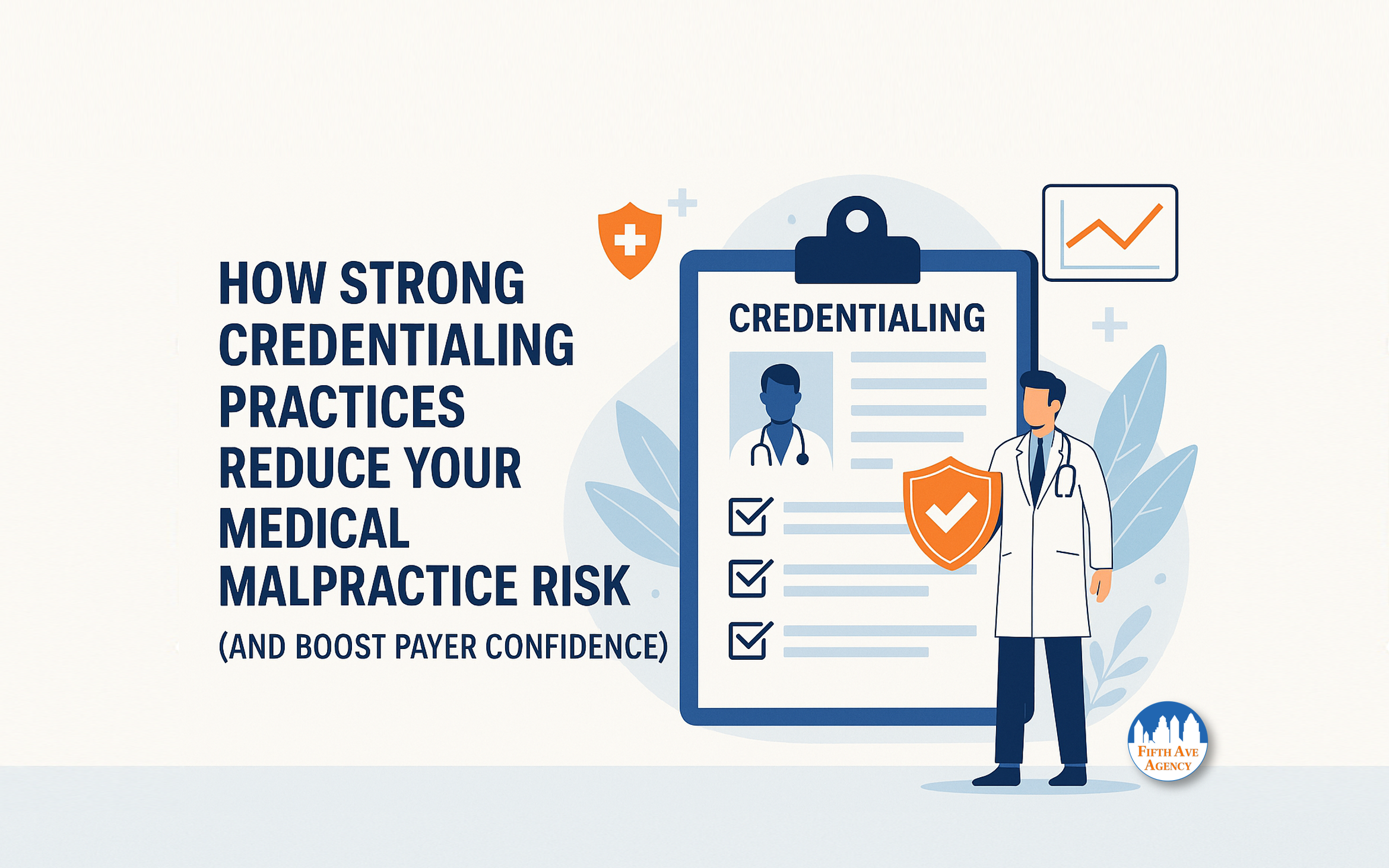Doctors shopping for medical malpractice insurance should go into the process with as much knowledge as possible. Knowing how much and what kind of coverage they need will help them get what they require faster.
Doctors should ask the following medical malpractice questions to help them decide what insurance carrier is best for them:
- What percentage of the carrier’s claims are closed without payment?
- What is the carrier’s trial win percentage?
- What is the carrier’s A.M. Best rating?
- How much of a doctor’s salary goes to medical malpractice insurance?
- How does my practice specialty affect the cost of medical malpractice insurance?
- Bonus medical malpractice question: what is the difference between claims-made and occurrence-made medical malpractice claims?
Let’s examine each of these questions more closely.
1. What percentage of the carrier’s claims are closed without payment?
The Justice Department’s Bureau of Justice Statistics studied seven states (Florida, Illinois, Maine, Massachusetts, Missouri, Nevada, and Texas) from 2000 through 2004 and found that most medical malpractice claims were closed without payment. Their findings were despite Florida and Massachusetts not collecting data on closed claims without a payout. The data from Texas was limited to closed claims with a payout of more than $10,000.
The breakdown of percentages for the remaining states is as follows:
-
- Nevada: 62.4% of claims closed without a payout
- Maine: 66%
- Missouri: 69%
- Illinois: 87.9%
42.7% of the insurance payouts in Florida were under $100,000. In Massachusetts, the percentage was 21.1% and 32.7% in Texas.
2. What is the carrier’s trial win percentage?
A study published in 2008 collected data for two decades to determine the outcomes of medical malpractice litigation. The study found that carriers win:
-
- 80% to 90% of the trials where weak evidence of medical negligence is present.
- 70% of the borderline cases.
- 50% of the trials where there is compelling evidence of medical negligence.
Between 80% and 90% of the claims deemed arguable were dismissed without payment.
3. What is the carrier’s A.M. Best rating?
The A.M. Best Company was founded in 1899, becoming the world’s first credit rating agency. They also serve as a trusted independent industry analyst with carrier ratings. A.M. Best evaluates over 16,000 insurance companies across the globe.
An insurance carrier’s A.M. Best rating estimates a company’s ability to pay its debts. They rate companies on a scale that sees a C rating as the worst and an AAA rating as the best.
Experts agree that an A- is a good indicator that the company can pay its debts without serious issues.
4. How much of a doctor’s salary goes to medical malpractice insurance?
Medical malpractice insurance costs depend on the doctor’s specialty, the state where they practice, and the amount of coverage they need.
Doctors in higher-risk specialties, like obstetricians, pay more than family practice physicians. Doctors in New York, Rhode Island, Pennsylvania, and New Jersey pay the most in the country for malpractice insurance costs. Doctors practicing in North Dakota pay the least.
The average cost of medical malpractice insurance is $7,500 per year, about 3.2% of most doctors’ incomes.
5. How does my practice specialty affect the cost of medical malpractice insurance?
Insurance carriers look at a doctor’s specialty to determine their rates. The riskier a specialty, the higher chance the doctor can be sued. This information will result in a higher rate.
Obstetricians, surgeons, and emergency room doctors usually must pay more than any other healthcare provider. On average, surgeons pay between $30,000 and $50,000 in annual premiums, compared to a doctor practicing in a lower-risk specialty who can pay around $7,500 yearly. Some obstetricians pay as much $215,000 a year.
Bonus medical malpractice question: What is the difference between Claims-Made and Occurrence-Made policies?
There are two basic types of malpractice insurance. Claims-made and occurrence-made policies relate to when a doctor has coverage and when a patient makes a claim.
-
- Claims-made: Covers claims that occur when a policy is in place. Both the incident and the claim made must have occurred within the coverage period. If the claim were made after coverage ends, carriers would not cover it unless the policy has written an extended reporting period.
- Occurrence-made: covers claims if the policy was in place when the incident occurred. The date of the claim is irrelevant and can be filed after the policy has been canceled.
Doctors who know the answers to these medical malpractice questions can easily find medical malpractice insurance that is right for them. Being knowledgeable can result in the best coverage at a reasonable price.
Medical malpractice policies can be complicated, and they are vital to the protection of the provider and practice they serve. Having the right coverage can keep a practice open if an otherwise potential practice closing claim payout was required.
It is important to understand the medical malpractice policy as best as possible. Read more about understanding policy limits by Fifth Avenue Agency here.
More information about Fifth Avenue Agency
Fifth Avenue Agency specializes in MPLI and medical malpractice insurance, serving 1000s of providers nationwide. Fifth Avenue Agency is part of the Fifth Avenue Healthcare Services family. Sister companies include 5ACVO (credentialing and primary source verification specialists) and Primoris Credentialing Network (credentialing and provider enrollment specialists with 54+ health plan and network provider enrollment options).
Fifth Avenue Agency initially published this article here. For information on Fifth Avenue Agency, please visit FifthAvenueAgency.com or Contact Us.















